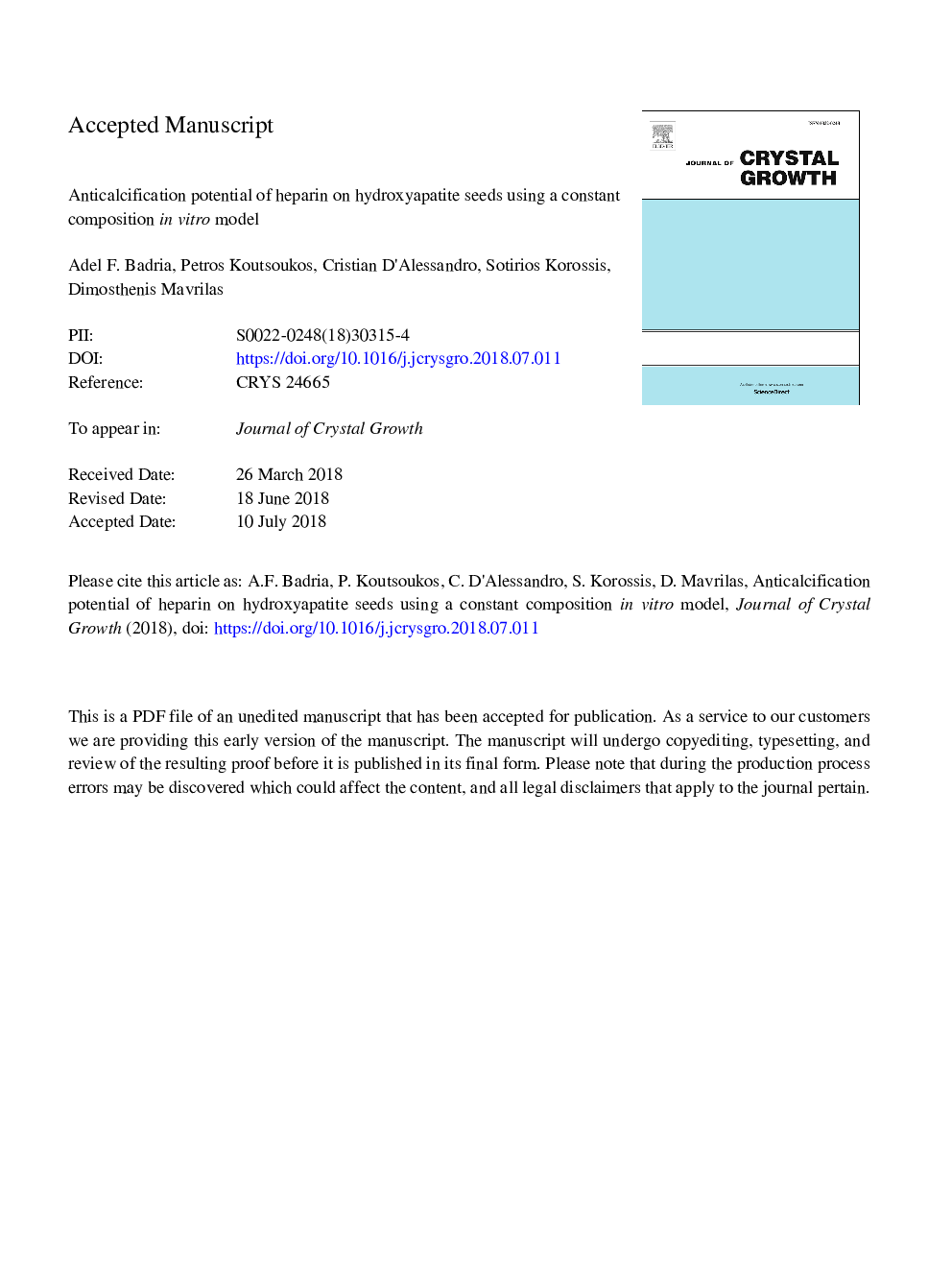| Article ID | Journal | Published Year | Pages | File Type |
|---|---|---|---|---|
| 8148412 | Journal of Crystal Growth | 2018 | 17 Pages |
Abstract
Calcification is among the principal causes of biological heart valve substitute failure. Glycosaminoglcans (GAGs) are negatively charged molecules, possessing anticoagulation and anti-inflammatory activity that make them a potential solution against calcification. In the present work, the anticalcification potential of heparin was investigated under constant supersaturation conditions with respect to hydroxyapatite (Ca5(PO4)3OH; HAP). Heparin concentration in the supersaturated solutions was in the range between 0.25 and 3â¯ppm, at pH 7.40 and 37â¯Â°C. Heparin showed inhibitory activity, which was attributed to adsorption at the active crystal growth centres. Heparin concentration as low as ca. 50â¯Î¼M, reduced the rate of HAP crystal growth by more than 80%, while further increase (up to 200â¯Î¼M) failed to completely inhibit the process beyond 90%. Heparin uptake studies at equilibrium conditions and analysis of the kinetics data in the presence of heparin, strongly suggest that the inhibition is due to the adsorption of heparin onto the HAP crystals, which resulted in the poisoning of the active growth sites.
Keywords
Related Topics
Physical Sciences and Engineering
Physics and Astronomy
Condensed Matter Physics
Authors
Adel F. Badria, Petros Koutsoukos, Cristian D'Alessandro, Sotirios Korossis, Dimosthenis Mavrilas,
